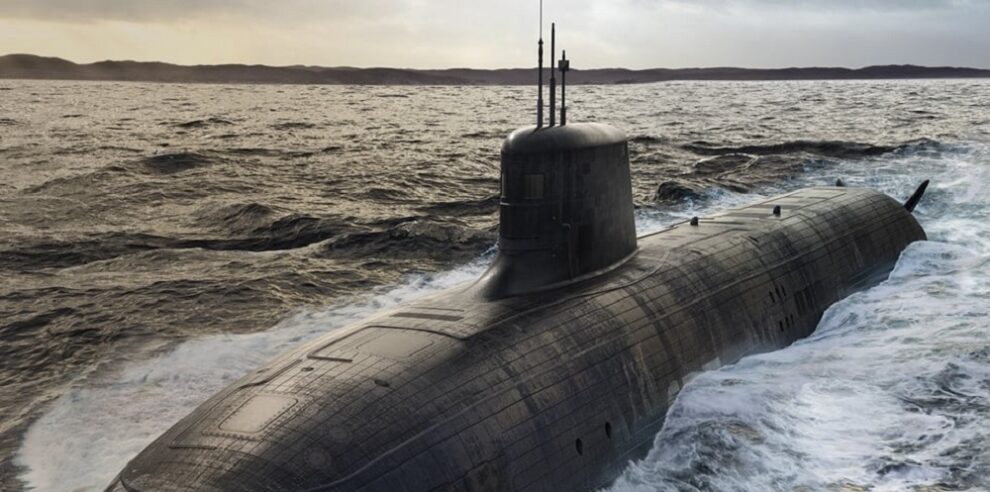Australia will announce the company that will team with the United Kingdom to build nuclear-powered submarines within the next year, a Royal Australian Navy officer told reporters Wednesday.
“That entity will have a huge role to play in determining some of those requirements,” Royal Australian Navy Commodore Bradley Francis told reporters Wednesday at the annual Naval Submarine League symposium.
“The SSN AUKUS will have a high level of interoperability with the Virginia class. There’s a stated amount of technology that’s going to be integrated with SSN AUKUS that we’ll be familiar with by then. So the focus of the environment is building a workforce to operate Virginia,” Francis added.
Last month, the U.K.’s Ministry of Defense issued BAE Systems a $5 billion contract to build the next-generation attack boats.
SSN AUKUS is the nuclear-powered attack submarine based on the United Kingdom’s next-generation design that is a crucial part of the new technology-sharing agreement between the U.K., Australia and the United States, now known as AUKUS.
“The SSN AUKUS is U.K./Australian-built with a heavy infusion of U.S. nuclear and combat system technology,” Vice Adm. Bill Houston, the commander of Naval Submarine Forces, told reporters this week at the same conference.
The U.S. is still assessing what technology will go on SSN AUKUS and on the Virginia-class attack boats the U.S. sells to Australia in the interim, Capt. Lincoln Reifsteck, the AUKUS integration and acquisition program manager, said Wednesday.
The plan is for the U.K. and the U.S. to help Australia develop an indigenous capability to build and maintain nuclear-powered submarines. But in the meantime, Australia will buy three Virginia-class attack boats from the U.S.
Houston said the two in-service boats will be Block IV Virginias and the new boat will be Block VII, which does not have the Virginia Payload Module. The U.S. plans to sell the in-service Block IV Virginias in Fiscal Year 2032 and FY 2035, then the new Virginia submarine in FY 2038, Houston said. The RAN has the option to buy as many as five Virginia boats.
“We’re not looking at major changes to that,” Reifsteck said of the Block IV boats. “We’re assessing each type of capability. We’re assessing each type of system. But it’s very hard to go into a well-established design and start redesigning it in a midlife overhaul prior to selling it.”
The U.S. Navy’s goal is for the industrial base to build two Virginia boats and one Columbia-class nuclear ballistic missile submarine per year. But the shipyards are currently delivering only 1.3 Virginia boats per year. In order to sell Virginia boats to the Australians, U.S. Navy officials said the industrial base needs to build 2.33 Virginia boats and one Columbia per year.
To bolster the submarine industrial base capacity, the Biden administration last month submitted a $3.4 billion supplemental funding request for FY 2024.
While the three nations continue on the years-long investment for Australia to develop this new capability, the U.S. and U.K. will train RAN submariners to maintain and operate nuclear-powered boats.
“We will have Australian submariners – we have them on in small numbers right now – but we are talking about having Australian officers, nuclear-enlisted and … submarine rating[s], on just about every SSN in the Pacific,” Houston said.
The Navy currently has a handful of RAN sailors on U.S. submarines but is ramping that up so it will eventually have hundreds, according to Houston.
Over the course of the next year, the U.S. and U.K. will ramp up training of RAN sailors at Pearl Harbor Naval Shipyard and Intermediate Maintenance Facility. At the end of this month, Australians will embed at Pearl Harbor to learn how to plan maintenance availabilities for nuclear-powered attack boats and perform the availabilities, Reifsteck said.
“You’ll see additional port visits. I think you’ll see Australians working with the U.S. side by side – both uniformed and civilian sustainment workers. I think you’ll see Australians, pending the legislative changes that we’ve asked for, actually starting to do work with their U.S. counterparts on U.S. submarines in Australia or in the United States. I think you’ll see additional embedments in the U.K. industry and shipyards, which have already started,” he added.
There are pending legislative proposals in Congress that would allow Australia to contribute funds to bolster the industrial base in the U.S. and Australia’s private industry to get the required training to help develop the indigenous industrial base, according to the Congressional Research Service. The dollar figure investment from the Australians is still under discussion, according to Reifsteck.
There will also be more Australians training in the U.K. and in the U.S. in uniform, and moving from the nuclear power school pipeline to the tactical, then eventually serving on U.S. boats.
Source : USNI News






























